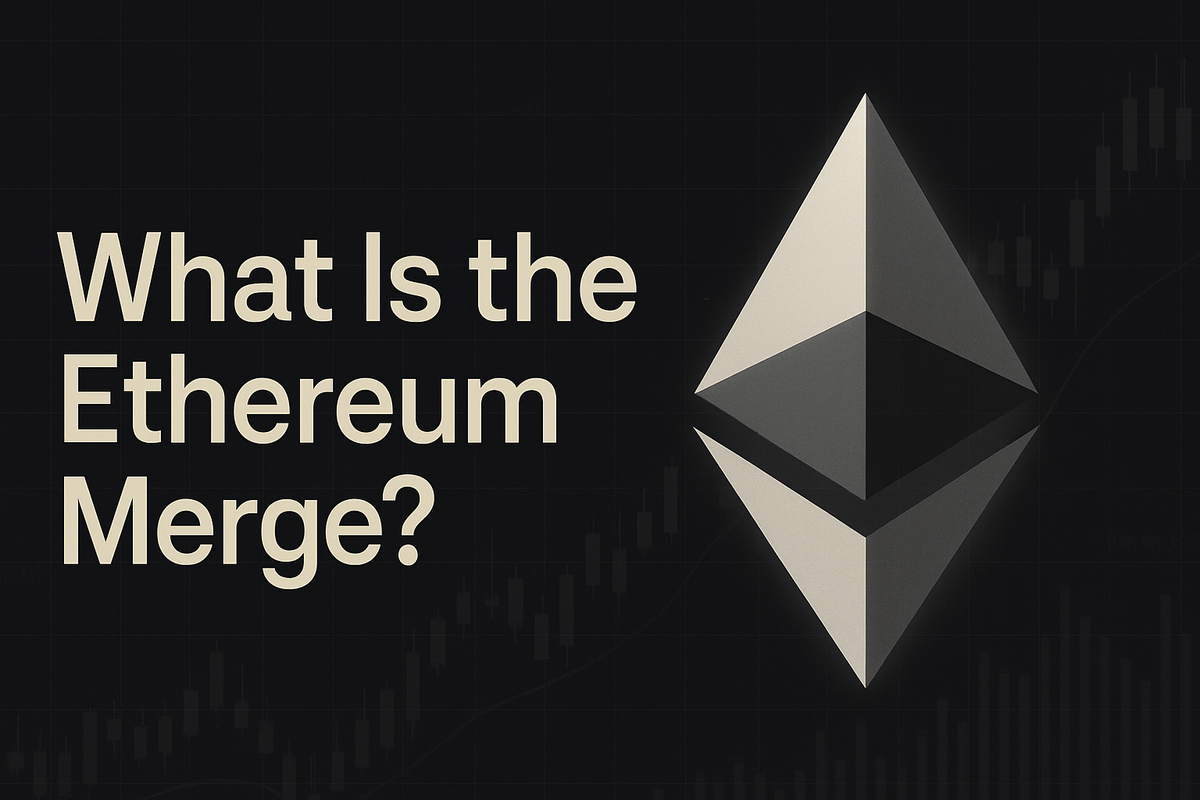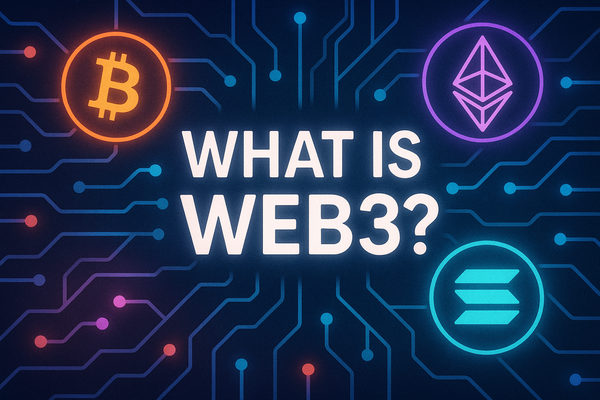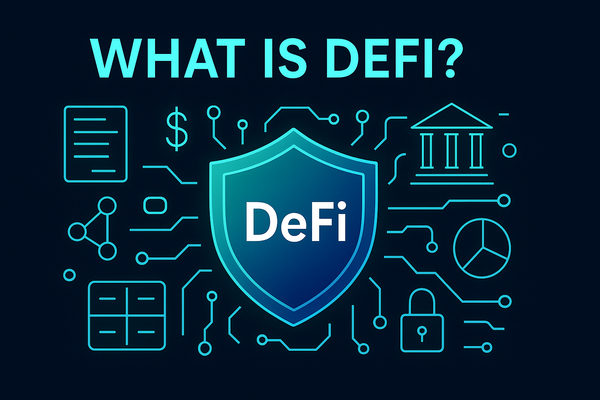What Is the Ethereum Merge? Ethereum’s Shift to Proof-of-Stake Explained
The Ethereum Merge was a major upgrade that replaced mining with staking. Discover how this transition reshaped the network’s sustainability and future.

The Ethereum Merge refers to the long-anticipated upgrade in which Ethereum transitioned from a proof-of-work (PoW) consensus mechanism to a proof-of-stake (PoS) system. Officially executed on September 15, 2022, the Merge marked a foundational shift in how the Ethereum network validates transactions and secures its blockchain.
Before the Merge, Ethereum relied on energy-intensive mining—similar to Bitcoin—to process transactions. With PoS now in place, Ethereum validators are chosen to propose and confirm blocks based on the amount of ETH they “stake” rather than the computational power they contribute.
This upgrade was not a spur-of-the-moment decision. It was years in the making and represents one of the most significant milestones in blockchain history. By eliminating the need for mining, Ethereum reduced its energy consumption by over 99%, positioning itself as a greener, more scalable platform for decentralized applications.
More than just a technical update, the Merge is a stepping stone toward Ethereum’s broader roadmap—which includes sharding, scalability improvements, and greater network efficiency.
Ethereum’s Journey to the Merge
Ethereum's transition to proof-of-stake wasn't an overnight change—it was a multi-year effort involving extensive research, development, and community coordination. The idea of moving away from proof-of-work was proposed by Ethereum co-founder Vitalik Buterin as early as 2014, before the network even launched. At that time, it was already clear that the energy demands and centralization risks associated with mining could become long-term challenges.
The first major step toward this vision came with the launch of the Beacon Chain in December 2020. This new, parallel PoS blockchain ran alongside Ethereum’s mainnet, allowing developers to test the new system in a live environment without disrupting the existing network. Over time, the Beacon Chain gained functionality and stability, laying the groundwork for a seamless merger.
In the lead-up to the Merge, Ethereum underwent a series of crucial upgrades—including Altair and Bellatrix—that incrementally prepared both chains for integration. Meanwhile, the community conducted extensive testing through testnets like Ropsten, Goerli, and Sepolia, simulating the Merge under real-world conditions to ensure a smooth rollout.
The Merge finally arrived in September 2022, combining the execution layer (Ethereum mainnet) with the consensus layer (Beacon Chain). This marked the successful replacement of miners with validators and began a new era for Ethereum—one focused on sustainability, scalability, and innovation.
How the Merge Works: A Technical Overview
At a high level, the Ethereum Merge combined two separate layers: the execution layer, which handled smart contracts and transactions (the original Ethereum mainnet), and the consensus layer, powered by the Beacon Chain, which introduced proof-of-stake validation. Prior to the Merge, the Beacon Chain was live but not responsible for processing actual Ethereum transactions. After the Merge, the Beacon Chain became the new consensus engine for Ethereum.
In proof-of-work, miners compete to solve complex mathematical puzzles to validate blocks, consuming vast amounts of energy. With proof-of-stake, validators are randomly selected to propose and attest to new blocks based on the amount of ETH they have staked—removing the need for mining altogether.
The Merge was executed as a “hot swap” under the hood. Rather than launching a new network or forking the chain, Ethereum developers seamlessly transitioned the network’s consensus mechanism mid-operation. This meant users, dApps, and smart contracts experienced no downtime or loss of data.
To maintain continuity, the Merge was triggered by a specific terminal total difficulty (TTD) threshold—a cumulative measure of work done on the chain. Once that value was reached, the network automatically switched from PoW to PoS, with the Beacon Chain taking over block validation duties.
Critically, the Merge did not increase Ethereum’s transaction speed or reduce gas fees. Its main purpose was to replace the consensus model and lay the groundwork for future upgrades, such as sharding and scalability improvements.
Implications for Energy Consumption and Sustainability
One of the most transformative outcomes of the Ethereum Merge is its dramatic reduction in energy consumption. By transitioning from proof-of-work to proof-of-stake, Ethereum cut its energy use by over 99.95%, according to estimates from the Ethereum Foundation. This shift not only addressed widespread environmental concerns but also redefined Ethereum’s public image in the global sustainability conversation.
Under the proof-of-work model, Ethereum required vast amounts of computational power to validate transactions—mainly provided by specialized mining hardware running 24/7. This process was not only energy-intensive but also led to concerns about carbon emissions and resource centralization in regions with cheap electricity.
With proof-of-stake, these operations became nearly obsolete. Validators now participate by staking ETH rather than running high-powered mining rigs. As a result, Ethereum's energy profile is now comparable to that of a small traditional business, rather than a large industrial operation.
This change positions Ethereum as a leader among blockchains aiming to reduce their environmental footprint. While Bitcoin and other PoW-based chains continue to face criticism for their energy usage, Ethereum has taken a definitive step toward aligning blockchain technology with climate goals and responsible innovation.
For environmentally conscious users, developers, and institutional investors, the Merge has made Ethereum a far more appealing platform—particularly in an era where ESG (Environmental, Social, and Governance) criteria increasingly influence financial decisions.
Effects on Ethereum's Scalability and Security
While the Merge did not directly boost Ethereum’s transaction throughput or reduce gas fees, it laid essential groundwork for future scalability improvements—most notably sharding, which is planned in later updates. The shift to proof-of-stake improves the network's flexibility in implementing upgrades that were previously difficult or risky under proof-of-work.
From a security perspective, proof-of-stake brings several notable advantages. In PoW, security largely depends on the amount of computational power an attacker can acquire. In PoS, an attacker would need to acquire and risk a significant portion of the network’s staked ETH—an expensive and economically irrational proposition. If validators behave maliciously, their stake can be slashed, meaning they lose part or all of their ETH.
This slashing mechanism makes attacks like 51% attacks far less appealing and more self-destructive, strengthening Ethereum’s long-term resilience. Additionally, proof-of-stake supports faster finality for blocks—meaning transactions are confirmed and settled with more certainty and less chance of reorganization.
The PoS system also promotes decentralization in a different way. Instead of needing expensive mining hardware, anyone with 32 ETH can run a validator node—or use staking pools to participate with smaller amounts. This potentially widens access to the consensus process and reduces reliance on centralized mining pools that dominated under PoW.
In essence, while the Merge itself didn’t immediately solve scalability, it shifted Ethereum onto a more secure and adaptable foundation for scaling and innovation in future phases.
Impact on Stakeholders: Miners, Validators, and Users
The Ethereum Merge fundamentally changed the dynamics for key participants in the ecosystem, including miners, validators, and everyday users.
For miners, the transition was a turning point. With the removal of proof-of-work, mining on Ethereum became obsolete overnight. Those who had invested in expensive GPU and ASIC hardware were left seeking alternatives. Some miners moved their operations to Ethereum Classic (ETC), which continues to use PoW, while others exited the space or shifted to mining less profitable coins. The Merge effectively ended mining as a viable economic activity on Ethereum.
In contrast, validators took center stage in the new proof-of-stake model. Anyone with 32 ETH could become a validator and begin earning staking rewards for proposing and attesting to new blocks. Validators no longer need physical mining rigs—only a stable internet connection and a dedicated software setup. This reduced barrier to entry encouraged broader participation, especially through staking pools and liquid staking solutions like Lido or Rocket Pool, which allow users to contribute smaller amounts of ETH.
For users, the Merge was relatively seamless in terms of day-to-day experience. Wallets, smart contracts, and decentralized applications (dApps) continued to function as normal. However, the long-term implications are significant. The network's reduced environmental impact, improved security model, and eventual scalability enhancements are all aimed at creating a more reliable and user-friendly Ethereum ecosystem.
The Merge also created new dynamics in staking yields, ETH supply issuance (which dropped significantly), and protocol-level incentives—making Ethereum a more attractive asset for long-term holders and institutional investors alike.
The Ethereum Merge FAQ
The Ethereum Merge was the upgrade where Ethereum transitioned from proof-of-work to proof-of-stake to validate transactions and secure the network.
The Merge occurred on September 15, 2022, successfully combining Ethereum’s execution and consensus layers.
No, the Merge did not directly reduce gas fees. It focused on changing Ethereum’s consensus mechanism, not transaction capacity.
Ethereum reduced its energy consumption by over 99.95% after switching to proof-of-stake.
Mining became obsolete. Many miners either shut down operations or switched to other PoW networks like Ethereum Classic.
Yes, anyone with 32 ETH can run a validator node. Smaller holders can join staking pools to participate.
Ethereum’s roadmap includes upgrades like sharding, proto-danksharding (EIP-4844), and scalability improvements to support growth.





